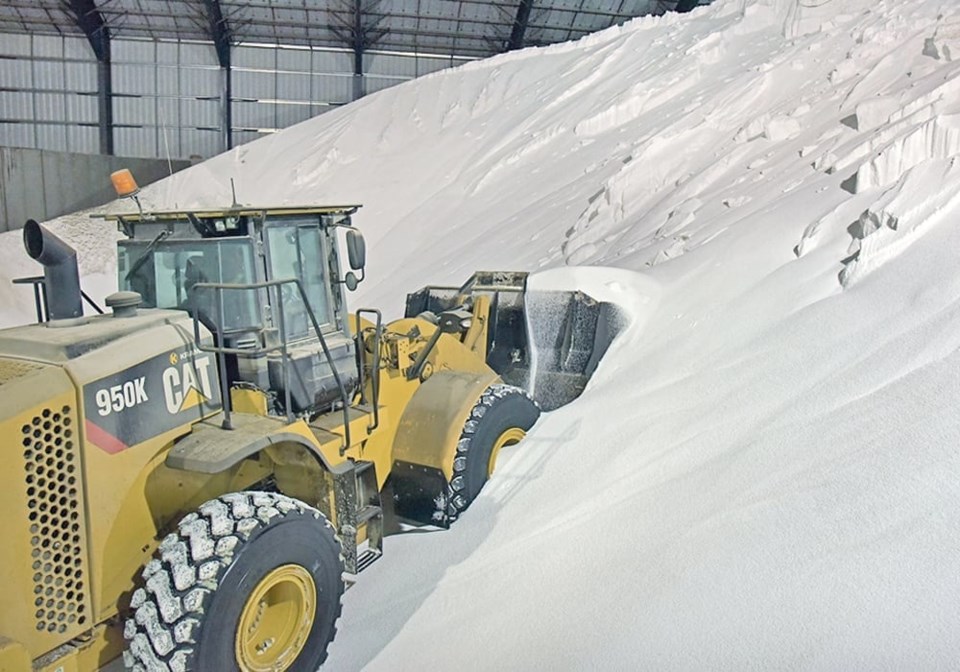WESTERN PRODUCER — The rollercoaster ride may be over for fertilizer prices, says an industry executive.
“After 18 months of incredible volatility, we believe the market is stabilizing,” Ken Seitz, president of Nutrien, told investors attending BMO’s Farm to Market Chemicals Conference.
“Heading into the fall, we see this relative price stability for the balance of the year.”
Urea prices are down 40 percent since spring 2022, while anhydrous prices have plummeted 42 percent, according to DTN.
Seitz said the freefall has retailers nervous about stocking their shelves with product in case prices drop further.
“We’ve just seen that incredibly cautious buying behavior,” he said, but he firmly believes prices have bottomed out due to a variety of factors.
Grain and oilseed prices have tumbled, but they are still 10 to 15 percent above their 10-year averages, so there is plenty of incentive for farmers to apply crop nutrients.
Natural gas prices in the European Union have plunged following a mild winter, but 40 percent of the region’s nitrogen fertilizer plants are still shuttered, so there are ongoing supply challenges.
The same goes for potash, due to sanctions and logistical challenges in Russia and Belarus.
Joel Jackson, fertilizers and chemicals analyst with BMO Capital Markets, said everyone was waiting for a rally in nitrogen fertilizer prices during the first quarter of 2023, but that didn’t happen.
“It seemed like there was a buyer pushback this year on acquiring inputs,” he said.
Seitz said that was indeed the case.
“In nitrogen, we saw incredibly thinly traded volumes in that quarter.”
But the rush is on in the second quarter, in which sales volumes so far are 40 percent above the same period last year, and that has created price stability for urea.
Ammonia prices could rise in the second half of the year due to the ongoing curtailment in Russian exports of the commodity.
Global potash shipments fell to 61 million tonnes in 2022, down from 70 million tonnes the previous year.
Potash prices of US$1,200 per tonne seriously lowered demand. There were also supply problems in Belarus and Russia.
Those supply issues are going to linger in 2023, so total shipments will likely remain about nine million tonnes below 2021 levels despite prices 小蓝视频 at one-third of last year’s highs, said Seitz.
He reminded investors that potash demand continues to expand at a 2.8 percent compound annual growth rate (CAGR), while nitrogen is experiencing a 1.5 percent CAGR.
Potash demand could be in the 80 to 85 million-tonne range by the end of the decade.
Mosaic president Joc O’Rourke said many investors wonder why potash and phosphate prices are not higher than they are today given the supply-side restrictions of both commodities. They wonder if the problem is on the demand side, but O’Rourke rejected that notion.
“We strongly believe that while there is some deferral, there certainly is no demand loss or demand destruction.”
The stocks-to-use ratio for grains and oilseeds (excluding China) is below 15 percent, which he considers “extremely bullish.” He believes grain and oilseed prices will either hold or improve.
Meanwhile, fertilizer prices have crossed the threshold into the affordable range for growers.
“What that means is demand should follow,” said O’Rourke.
That appears to be the case in the all-important North American market. After a miserable February and March, Mosaic experienced the best April sales for phosphate and potash in five years.
“Once the farmers came to the market, the U.S. has been a rush,” he said.
That is leading to stronger prices, with DAP fertilizer selling for $765 per tonne in the U.S. Midwest and potash at $515.
O’Rourke believes the same trend will soon take hold in Brazil and other markets around the world and agrees that potash supplies will continue to be constrained due to the problems in Russia and Belarus.
He also expects China to continue to restrict phosphate exports as the government attempts to assure adequate supplies for its own growers and to produce lithium ion phosphate batteries.
Mosaic is forecasting seven million tonnes of Chinese exports, up from six million tonnes last year, but well below previous volumes.
O’Rourke said investors in general seem negative on agriculture right now.
“It doesn’t make a whole lot of sense to me. People gotta eat.”
Contact [email protected]




